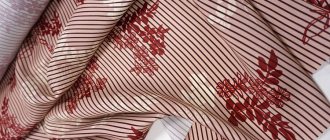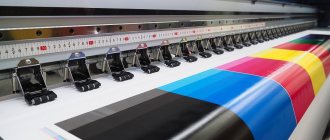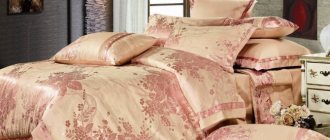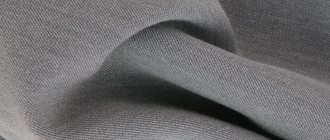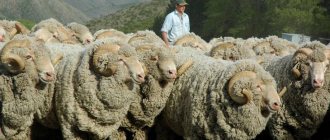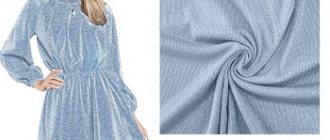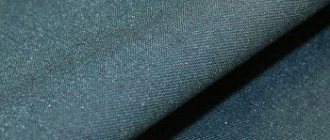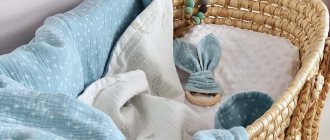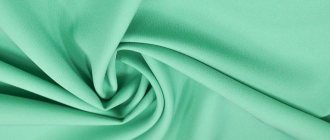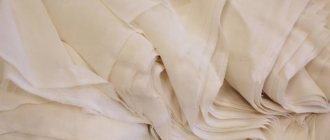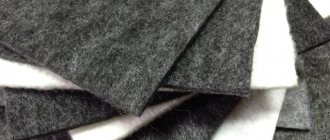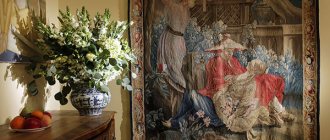Tent fabric - production features
Today, its structure is similar to tarpaulin, but it is much lighter and softer. Despite this, it perfectly protects against moisture.
Where is this type of fabric produced?
In the production of fabric, exclusively strong and thick coarse threads are used. They curl tightly together and are clearly visible in the texture. The more tightly the weft threads are twisted, the denser the structure of the fabric, but at the same time the better it protects from water. When wet, the fibers swell and fill every crack, resulting in a moisture-proof effect. When dry, the product can allow air to pass through well, so a person will feel comfortable under it.
The most important indicator of tent fabric is its density. All characteristics depend on it. According to GOST, the best options are with a density from 210 g/m2 to 270 g/m2.
Density of matter
What should a quality tent be like?
A tent is a temporary, portable home, so it is very important that a person feels comfortable in it, almost like at home . This means that the equipment must fully comply with the following requirements:
- have a light weight so as not to burden luggage when traveling on foot;
- folds compactly into a small trunk or backpack;
- do not change shape under the influence of mechanical forces;
- have absolute protection from moisture;
- do not absorb water and dry quickly after rain;
- be strong and strong;
- have heat-saving properties;
- be resistant to open fire;
- reliably withstand the strongest winds;
- do not burn out in the sun;
- withstand significant temperature changes;
- provide aeration of the internal space;
- do not emit substances harmful to humans;
- quickly assembled and dismantled;
- be dirt and dust resistant;
- easy to clean or wash;
- do not lose their qualities for a long time.
It is also desirable that, having all the listed characteristics, the product does not have a “cosmic” cost and is accessible to any categories of buyers. All these wishes are taken into account in the production of tent fabrics.
How to choose tent fabric
Before purchasing, you need to visually inspect the canvas and pay attention to the following nuances:
- Front side. It should be free of shine (this indicates the presence of synthetic threads in the composition) and lint (a large number of them indicates that the cotton fibers in the composition are of poor quality). The thread twisted into a rope is clearly visible. If thickenings are visible in places, this is normal.
Fabric product
- The wrong side. Slightly shiny. This is due to the presence of water-repellent impregnation.
- If you look at the light, you can see gaps on the product. If there are many of them, then the density of the product is low, and if there are few, then, accordingly, the density is high.
- Another way to check the tightness is to fold the fabric. The thicker and tighter the fold, the greater the density.
- The more the fibers are twisted, the better the fabric will protect against water.
- Strongly twisted weft threads make the product look like a tarpaulin, but this only improves its properties.
- Impregnation. For tents it is better to choose a water-repellent one, but for awnings, awnings and covers, one that will protect against rotting.
Special clothing
What is the difference between minimum weight and fully loaded weight?
Minimum weight is the lightest option for installing a tent, while maintaining basic functionality. This means eliminating pegs, additional guy lines, repair kits, additional flooring, and any other non-essential items. Everything that you can do without is left at home.
How light is an ultralight tent?
The constant push for lighter gear means the definition of "ultralight" changes almost every year. That being said, by today's standards, any two-person tent weighing less than 1.8kg can reasonably be called "ultralight". Tents that range from half a kilogram to a kilogram are extreme options, in which some sacrifices are most often made - comfort, durability.
Tents weigh
In my cycling and mountaineering trips, I tried many different options for light and ultra-light tents and personally chose single-layer ones. However, they lose in comfort and have their own specifics, that is, this is the very option when you have to make certain sacrifices in comfort and convenience in order to lose weight. Therefore, in this review we will consider options for double-layer lightweight tents.
Popular tent fabrics and care for products made from them
There are many types of tent fabrics. They are natural and synthetic. Depending on the composition, each fabric requires certain care, ignoring the rules of which can lead to damage to the fabric.
- Pros and cons of matting: what is it, what is sewn from this material and what else is this fabric used for?
When deciding to purchase a tent, it is recommended to first study the characteristics of the most popular materials from which they are made. It is also important to learn how to properly care for them.
From natural raw materials
Tent fabric is rarely 100% made from natural materials. These materials are the safest for people, do not provoke dangerous diseases, and create a favorable microclimate inside the structure. However, they have low moisture resistance. This disadvantage cannot be offset by the advantages of natural materials. In this category of tent materials, tarpaulin can be distinguished. It can also conditionally include cotton coated with Teflon. A description of these materials is presented in the table:
Canvas fabric
| Type of natural fabric | pros | Minuses | Features of care |
| Tarpaulin | Free air circulation, accessibility, strength, density, wear resistance, environmental friendliness, resistance to high temperatures, fire, pathogens and ruptures, durability, wind resistance. | Heavy weight, low resistance to the negative effects of moisture and sub-zero temperatures, rigidity, thickness. | Dried dirt is removed with a damp cloth. More serious stains can be removed with laundry soap. Store only dry. |
| Cotton with Teflon coating | Moisture and heat resistance, color fastness, wrinkle resistance. | Difficult to maintain, limited service life. | Contamination is removed with a damp cloth. Frequent washing is contraindicated. Wash in warm water (up to 40 degrees) with laundry soap or neutral detergent. No rubbing or twisting. Dry flattened in a horizontal position. |
Cotton with Teflon coating
Synthetic fabrics
The category of synthetic tent fabrics includes Oxford called “Tourist”, Greta, Monaco, Taffeta. These materials are made from polyamide or polyester raw materials. They differ from each other not only in composition, but also in operational properties. You can use a damp cloth to clean these fabrics. They can be washed in warm water with neutral detergents. The characteristics of these fabrics are presented in the table.
Oxford
| Fabric name | Advantages | Flaws |
| Oxford | Strength, resistance to negative atmospheric factors, durability, insulation. | None |
| Greta | Strength, lightness, water resistance, color and shape stability, wrinkle resistance. | |
| Monaco | High density, strength, moisture and wind resistance, waterproof, easy to paint. | |
| Taffeta | Waterproof, quick-drying, wrinkle-resistant. | Low strength and heat resistance, airtightness. |
Taffeta
Calico (article 262, bleached)
The awning of the tent is sewn from plain-dyed cotton fabric weighing 142 gm; fire-resistant impregnation is possible at the request of the customer. Such an awning is ideal for a summer tent, because the material is hygienic (thanks to this quality, calico is the most popular fabric for sewing bed linen), lightweight, breathable, and has low wrinkleability. It will be comfortable to live in the tent in the heat; the additional layer will prevent condensation inside the tent. Most often, white calico is used to sew a tent, but if necessary, the inner awning can be made in a different color.
The nuances of forced heating
When the tent is insulated from the outside and inside, you need to think about heating. Device options:
- Alcohol burner. It is light and economical, but produces little heat.
- Paraffin candle. It will help in a small one-person tent in mild frost. The flame is directed upward, and all the heat is concentrated there. For normal heating you will need 10 candles. The downside is the high fire hazard. You will have to watch the candles all the time so that they do not fall and set the tent on fire.
- Dry fuel. There are so-called “dry alcohol tablets”. They can be used, but you will have to be distracted every 15 minutes to ignite a new tablet. The advantages are the absence of odor and soot.
- Gas lamp. Recharges with propane. It provides little heat and is only suitable for mild frosts.
- Gas heater. There are many different modifications. The simplest is “Pathfinder” with a power of up to 2 kW and a flow rate of up to 110 g/h. Weighs only 370 grams and can heat a room up to 20 sq.m.
- Gas burner with infrared radiation. Connects to a gas cylinder with a capacity of 5-50 liters. Power from 1.45 kW, consumption from 100 g/h. You can cook food on this device.
- Catalytic heating pad for individual heating. Placed on clothing. Portable device charged with highly purified gasoline. Safe device with a minimum flow rate of 20 ml/hour. Battery life -16 hours.
- Gas infrared heater "Solyarogaz". Budget device with good power. Quickly heats up a small tent space.
- Gasoline Primus tourist. Allows you to cook food and heat water, while warming the tent. Not suitable for heating separately.
- Mini solid fuel stove. Runs on coal or wood. The pipe must be routed outside the tent. Use for short-term winter fishing is not justified. You need to take fuel with you and build an outlet for the pipe.
When using any type of heater, there is a mandatory condition - the tent must have a ventilation hole.
Otherwise, there is a risk of poisoning from combustion products. Gas appliances have a big disadvantage - in severe frosts the gas freezes, so the tent must be properly insulated. In addition, you need to take a gas cylinder with you.
In addition to modern ones, there are old methods that fishermen have used since ancient times:
- Hot stone. A large stone is heated over a fire, wrapped in several layers of foil and placed on a board in the tent. The heat generated will last for about 6 hours. Difficulties - you need to make a fire and look for a stone.
- Boiling water. A bucket of water is heated, closed tightly and placed on a stand. Heating will last for 4 hours. The main thing is not to forget about the dangerous object and not get burned.
Of course, improvised heaters will not be enough for the entire frosty night. For a short time, you can get by with these available means.
Frame
The most durable, in terms of wind resistance, design is with cross arches. The more there are, the stiffer the frame.
- samples with one arc are very unreliable and can collapse under the weight of snow;
- two supports are usually sufficient;
- in difficult conditions, stability will be ensured by three or more racks.
Guy ropes provide additional strength to the shelter. For parking, it is better to choose guy lines with reflective elements - a camp neighbor who gets lost at night will not stumble upon your house.
There are two ways to set up a tent: manual and automatic. The first involves manual assembly of the frame and tensioning of the awning. The process of installing automatic copies takes only 2–3 minutes, since the shelter opens on its own. As you might guess, such mechanisms are more expensive and larger.
Arcs are made from several types of materials:
- Aluminum is the most practical option, combining excellent performance properties: reliability, lightness and affordable cost.
- Carbon (carbon fiber) – used in expensive lightweight objects.
- Fiberglass is a low-cost product with high elasticity. The main disadvantage is fragility and susceptibility to cracking under the influence of sun and frost.
- Durapol is a durable version of fiberglass. Lightweight, shock-resistant and does not bend.
You can buy a tent at a good price with home delivery in an online travel equipment store.
Additional items
We have already named the main selection parameters. But there are other important little things that can make a new traveler think twice.
- Pockets and hooks - with their help it is convenient to place personal items. But every shelf or pocket makes the load heavier.
- A loop for hanging a lamp - so you don’t have to think about where to attach the lamp or flashlight.
- Autonomous lighting system - no need to hang anything. Simply insert batteries or rechargeable batteries – and it’s light inside.
- Packaging bag – for compact transportation and storage. It is not always convenient to use it during the hike, since the covers are often too narrow and small to fit all the details.
- Repair kit - may include elements for repairing arches, awnings, hooks and mosquito nets.
Watch how to choose a tent for central Russia for the warm season in a useful video.
Salewa Micra
More budget-friendly in its class of tents for mountaineering and mountain tourism, the double Salewa Micra weighs 2.3 kg when fully equipped. The classic and familiar to many design on two arcs allows you to quickly set up a tent at any time of the day and in any condition. However, it is worth considering that this design is not as resistant to hurricane winds as a domed one. Therefore, if you are planning overnight stays in extreme storm conditions, then it is better to consider the Salewa Litetrek and Salewa Litetrek Pro.
In general, this model can be considered a classic in its ratio and maintained balance between functionality, moisture resistance, reliability, weight and price.
The Salewa Micra tent has been successfully used by tourists and climbers on their hikes and climbs for many years.
A large number of internal pockets and a convenient ceiling shelf allow you to find and take out the right thing at any time.
Well-designed ventilation windows that prevent water from entering even in strong crosswinds. And many other thoughtful details and little things.
— official distributor of Salewa products in Russia. We know it like no one else in our country and guarantee its quality.
If you have any questions about the quality guarantee of any goods sold at Kant, you can find the answers here
All Salewa tents in Kant
Correct location
First, the shelter must be secured to the ice, into which large screws are screwed or metal pins are driven in. The tent is attached to them using special tension loops.
A tent for winter fishing should be positioned in such a way as to protect it as much as possible from cold air. Before installation, determine the wind direction. The shelter is positioned so that the entrance to it and the ventilation hole are on the leeward side. The bottom of the tent is sprinkled with snow to provide stability.
This will provide preliminary protection against the cold.
Bottom
The bottom experiences high loads: pressure from the human body, stones and grass, water, snow. And therefore it is made from more durable fabrics than the main fabric. The bottom of a good tent should be waterproof to at least 5,000 mm water column. It is better to choose products with high sides of the bottom. This significantly reduces the risk of getting wet.
For the bottom, terpawling is often used. This is reinforced polyethylene with very good moisture resistance. It is cheaper than nylon, but heavier. In addition, it can be broken or pierced.
There are models with a skirt - this is a strip of fabric around the perimeter of the tent. It prevents cold air from blowing in and snow and water from getting between the awnings. Can be made removable or sewn on. Good for winter hikes, as it helps maintain a comfortable temperature inside. In summer and on mountain expeditions, in most cases it only makes luggage heavier.
